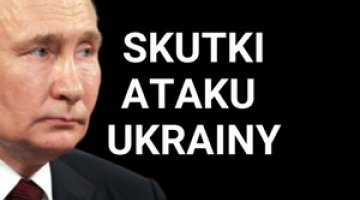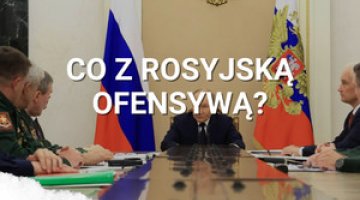Deployment of a European reassurance force in Ukraine: a political or military measure?
Since March, a coalition of the willing – led by France and the United Kingdom and comprising European countries and overseas partners – has been working on a concept for deploying a Western reassurance force to Ukraine once hostilities have ended. This represents the most concrete phase to date of a debate on this issue that began last autumn. The group’s most recent talks took place on 10 April at NATO headquarters. Further meetings are planned, with the aim of presenting the administration of Donald Trump with a comprehensive plan for deploying such a force to help guarantee peace in Ukraine.
Given the lack of prospects for a ceasefire – a necessary prerequisite for deploying a reassurance force – such a European-led mission appears unlikely in the foreseeable future. Russia continues to pursue its maximalist objectives and has no interest in halting military operations. The United States, for its part, is unwilling to exert pressure on Russia, provide substantial military assistance to Ukraine that could alter the situation on the battlefield, or commit to supporting European efforts.
Therefore, at this stage, the coalition’s actions serve primarily a political purpose. They are intended to demonstrate to the United States that its European allies are capable of contributing to efforts to end the war, to underline the importance of preserving Ukraine’s sovereignty for Europe’s security and – under the best-case scenario of securing a ceasefire – to encourage the US administration to support such a mission. However, in parallel with planning efforts, the group should focus on sustaining and increasing military assistance to Ukraine, as the US is likely to phase out its arms deliveries and the war is expected to continue.
Forging a coalition of the willing
Following meetings held in Paris and London in March, a number of countries formed a group to plan the deployment of military forces to Ukraine once a ceasefire is in place. The initiative was prompted by the failure of President Volodymyr Zelensky’s visit to Washington and the Ukrainian-US talks on 28 February. Europe responded to Washington’s shift in policy towards Moscow and Kyiv by pledging to continue providing military support to Ukraine, maintain economic pressure on Russia, safeguard Ukraine’s sovereignty, and prepare for the establishment of a stabilisation mission aimed at deterring Russia from resuming its aggression. (see ‘The failure of Zelensky’s US visit and Europe’s plan to end the war’)
The concept of a multinational reassurance force that could be deployed to Ukraine was discussed at subsequent meetings, including a gathering of Chiefs of General Staff from more than 30 countries on 11 March in Paris. Working groups have also been launched to examine international law considerations, logistical requirements, rules of engagement, and interoperability issues. On 10 April, more than 30 defence ministers and representatives of countries involved in the coalition of the willing met at NATO headquarters in Brussels, alongside officials from NATO and the EU, as well as Ukraine’s defence minister. This format includes most European members of NATO and the EU, as well as Canada, Australia, New Zealand, and Japan.
In the coming weeks, individual countries are expected to specify the forces and capabilities they could contribute to the operation or, in the case of those unwilling to deploy troops to Ukraine, to offer logistical and satellite support, as well as continued military assistance to Kyiv. According to the British Prime Minister, coalition members have already made initial declarations regarding their detachments to the potential mission, consisting of logistical and command-and-control assets, as well as land, air, and naval forces. France and Britain have announced that further meetings will take place in the near future. The aim is to present the Trump administration with a comprehensive concept for a reassurance force in Ukraine. This step is intended to demonstrate that America’s European allies are approaching the issue of security guarantees for Ukraine in a serious and coordinated manner, and to encourage the US administration to support the mission.
Conceptualising the reassurance force
The force assembled by the coalition of the willing would be deployed to Ukraine after a ceasefire ends the active phase of the conflict. According to the UK Defence Secretary, John Healey, the force is intended to guarantee compliance with the ceasefire – first in the air domain (through combat aircraft and ground-based air defence systems) and then at sea (there has been speculation that the Turkish navy could be involved); only at a later stage would it enforce the ceasefire on the ground. The group’s next objective is to plan for the continued strengthening of Ukraine’s military capabilities, so that these become the primary guarantee of lasting peace by deterring Russia from resuming hostilities.
Most of the countries participating in the coalition of the willing meetings – including Poland, Germany, Italy, and Spain – are not currently planning to send troops but have expressed willingness to play a supporting role; for example, Poland would contribute in the area of logistics. According to media reports, the number of countries signalling readiness to deploy forces to Ukraine ranges from a few to a dozen or more. Alongside France and the United Kingdom, the Nordic, Baltic, and Benelux countries – as well as Canada and Turkey – have indicated their openness to discussing direct military involvement on Ukrainian territory. A significant number of countries are observing the process for the time being, awaiting a final decision on the profile of the mission and the scope of US guarantees – a key factor in shaping their participation.
Although discussions have been taking place behind closed doors, media reports indicate a lack of a shared vision regarding the size, posture, and mandate of the reassurance force. In recent months, various proposals have emerged in the public debate, ranging from a relatively small training mission or a contingent of several thousand troops authorised to monitor the ceasefire (but not enforce peace – meaning they would not engage in Ukraine’s defensive operations should Russia resume its invasion) to a much larger force of tens of thousands of troops deployed closer to the front line. One recently floated option envisions a compact force of 10,000 to 30,000 troops, with a mandate that remains undefined at this stage of planning. President Emmanuel Macron has suggested that coalition forces could be stationed in selected Ukrainian cities away from the front line, including Lviv, Kyiv, and Odesa.
The positions of the United States, Ukraine, and Russia on the coalition of the willing
The Trump administration has ruled out deploying land forces to Ukraine or recognising the reassurance mission as a NATO operation covered by Article 5. It has not officially endorsed the European coalition of the willing, sending mixed signals on the matter. In mid-February, Secretary of Defense Pete Hegseth spoke in Brussels about security guarantees for Ukraine backed by the presence of European forces as part of a non-NATO mission, without US involvement. A questionnaire reportedly circulated among European allies at that time included a question regarding how many troops each country would be willing to send to Ukraine. In an April interview with The Times (UK), General Keith Kellogg, the US envoy for Ukraine, appeared to suggest that forces led by France and the United Kingdom could be stationed west of the Dnipro River. At the same time, Steve Witkoff, the US special envoy for the Middle East and a key figure in negotiations with Moscow, criticised the European plans to deploy a reassurance force to Ukraine in late March, describing them as mere posing.
Russia has maintained a consistently and unequivocally negative stance on the idea of deploying European troops to Ukraine in a peacekeeping role after the end of hostilities. The Kremlin continues to aim to establish a demilitarised rump Ukrainian state on territories not directly incorporated into Russia, which would be effectively subordinate to Moscow. The presence of Western forces in Ukraine would obstruct this scenario. Russian Foreign Ministry officials and the Kremlin’s spokesperson have repeatedly criticised the proposal, stating that the deployment of any forces from NATO or EU member states to Ukraine is unacceptable, regardless of the format such a mission might take. Russia has warned that such unilateral actions would constitute direct involvement in the war on Ukraine’s side, risking a direct confrontation between Russia and NATO.
Ukraine has been actively lobbying for the deployment of as many coalition troops as possible (President Zelensky has even mentioned figures as high as 200,000), viewing their presence as a guarantee of a lasting ceasefire and a means of deterring the enemy. It is seeking agreement with its partners on a broad mandate and a detailed mission plan outlining the structure, deployment locations, and rules of engagement of the allied force, which would include several components: land, air (air and missile defence), and naval (primarily to protect critical infrastructure and ports). In Ukraine’s preferred scenario, the United States would take part in the mission; without its involvement, the operation’s effectiveness would be limited.
A political tool?
As previously noted, the activity of the coalition of the willing primarily serves a political purpose in the current context. This is due to the low likelihood of reaching a ceasefire – let alone a peace agreement – a s well as the absence of US pressure on Russia and Washington’s reluctance to support the deployment of a European force in Ukraine. The initiative is intended as a signal to Washington, Moscow, and Kyiv that European countries are capable of contributing meaningfully to the peace negotiations initiated by the Trump administration. The countries involved in the initiative aim to underscore that preserving Ukraine’s sovereignty is of vital importance to Europe. Some European allies are also willing to support Ukraine by deploying their own forces on its territory, in order to prevent its neutralisation or demilitarisation.
Some of the countries involved in the coalition of the willing still consider it possible that the US administration could revise its approach, increase pressure on Russia, force it to accept a ceasefire, and support the deployment of European forces to Ukraine – backed by the threat of joint retaliation in the event of renewed aggression. For this reason, planning work has continued on possible options for deploying European troops. However, such a mission would depend on support from the United States, including the reaffirmation of its alliance commitments to Europe, the provision of essential intelligence, reconnaissance, and air support capabilities to the coalition, and the use of technical means to monitor the ceasefire along the line of contact.
Without such a contribution, the mission would be difficult to implement due to capability gaps. In addition, the limited military resources of European countries reduce the likelihood of deploying and sustaining significant forces in Ukraine over the long term. Moreover, such a deployment would undermine their ability to meet alliance commitments under NATO’s regional defence plans and its forward land forces’ presence on the eastern flank. Without US reinforcements to NATO’s north-eastern flank, this could weaken allied defence and deterrence. A purely European mission would also lack credibility in the eyes of Russia, which could seek to test its readiness to respond to ceasefire violations or a direct attack. Such provocations would aim to expose the European countries’ powerlessness and unwillingness to engage militarily to halt Russia’s advances in Ukraine.




